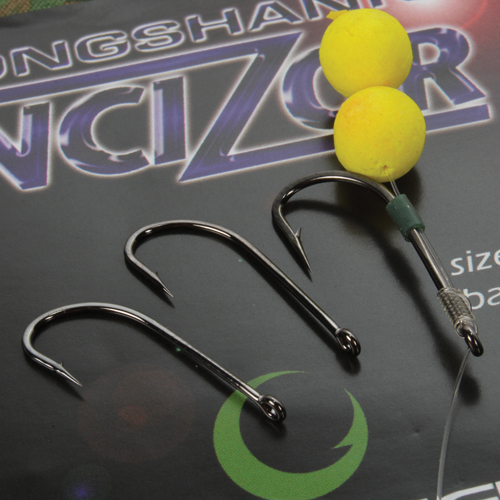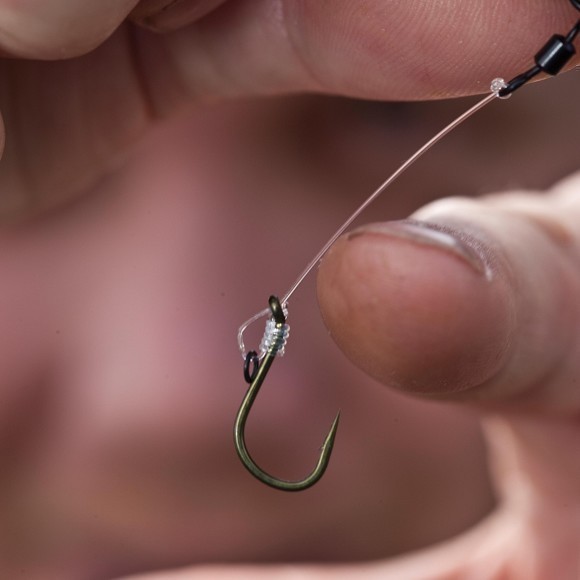There are so many different shapes and sizes of hooks in the Carp fishing industry it can be hard to find what you are looking for.
If you're a complete beginner to fishing then you may not know the different parts of a hook, which will be helpful when determining the right hook to use.
BARBED VS BARBLESS
This is an interesting topic and it usually ends up as a debate. Many anglers believe that barbed hooks can cause damage to the mouth of a carp when being removed. Whilst others believe that barbless hooks can slip and slice the mouth creating a larger wound.
It mainly comes down to the angler and the fishery rules. Most fisheries nowadays have a barbless only rule due to some anglers not knowing how to safely remove barbed hooks and if the line breaks, the carp will have a really hard time getting a barbed hook out on their own.
Barbed hooks definitely increase the chances of landing a fish so as long as the rest of the rig is strong enough, has a safe lead system and you know how to remove a barbed hook then it will be fine.
EYE:
This is the circular part of the hook at the top and is where the hooklength material will be threaded through and attached. There are two types of hook eyes, open and closed.
SHANK:
This is the length of the hook between the eye and bend. Hooks can have either a straight or curved shank and can also be long or short.
BEND:
This is the length from the shank to the point of the hook. Hooks can have slightly different shapes, but curved is the most popular for Carp fishing.
GAPE:
This is the gap between the point and the shank of the hook and can be either wide or narrow. If you're using larger baits like boilies then a wider gape could be the better option.
POINT:
This is the sharp part of the hook and is the section that will be caught in the fish's mouth. Hooks can have either a straight or beaked hook point. Below the point there can be a barb. However, some hooks can be barbless, more information on barbed and barbless hooks can be found below.
POPULAR HOOK PATTERNS
WIDE GAPE
The wide gape hooks have a longer bend, increasing the space between the eye and the point of the hook. The eye of the hook is usually turned inwards which will help with hook turn if tied correctly with a knotless knot. This hook will work better with supple hooklength materials like soft mono, braid or coated braid with a slightly stripped section. The most popular bait to use alongside this hook are boilies or popups.

LONG SHANK
The long shank hooks have a narrow bend and a longer shank. Hooks with longer shanks can also turn faster into the carp's mouth. This pattern of hook is usually used alongside a small piece of shrink tube over the eye of the hook and slightly over the hooklink. This creates a more in-turned eye and can make it harder for the fish to eject.

CHOD HOOK
The chod style hook has a larger eye which is also out-turned. This allows for hooklength materials with a wider diameter like a stiff mono or fluoro. This pattern of hook is most popular for chod and hinged stiff rigs.

CURVED SHANK HOOK
The curved shank hook is most commonly used as part of the KD rig. Due to the bend of the shank, carp seem to struggle ejecting the hook once it's set. This style of hook works best with flexible hooklength materials like braid.


 Bait
Bait
 Bait Accessories
Bait Accessories
 Bait Boats & Accessories
Bait Boats & Accessories
 Barrows & Trolleys
Barrows & Trolleys
 Bedchairs & Accessories
Bedchairs & Accessories
 Bite Alarms & Accessories
Bite Alarms & Accessories
 Bite Indicators
Bite Indicators
 Bivvies & Brollys
Bivvies & Brollys
 Boats
Boats
 Books/Media
Books/Media
 Catapults & Accessories
Catapults & Accessories
 Chairs & Accessories
Chairs & Accessories
 Clothing
Clothing
 Cooking Equipment
Cooking Equipment
 Fish Care
Fish Care
 Fly Lines
Fly Lines
 Lighting
Lighting
 Luggage
Luggage
 Lures
Lures
 Mainlines
Mainlines
 Nets
Nets
 Pole Accessories
Pole Accessories
 Pole Support
Pole Support
 Poles & Whips
Poles & Whips
 Reels
Reels
 Rod & Reel Kits
Rod & Reel Kits
 Rod Support
Rod Support
 Rods
Rods
 Scales
Scales
 Seat Boxes & Accessories
Seat Boxes & Accessories
 Terminal Tackle
Terminal Tackle
 Tools
Tools
